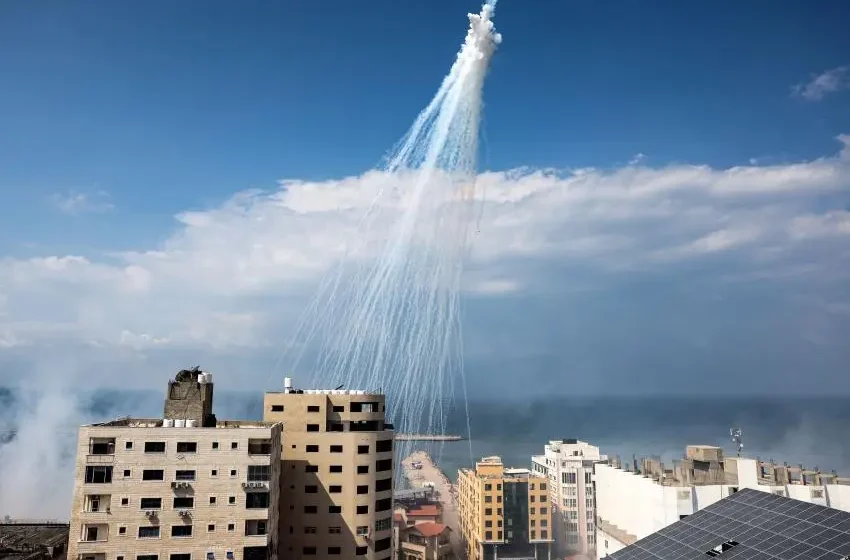White Phosphorus Munitions: A Detailed Overview

White phosphorus munitions are weapons that use one of the common allotropes of the chemical element phosphorus. White phosphorus is used in smoke, illumination, and incendiary munitions, and is commonly the burning element of tracer ammunition. Other common names for white phosphorus munitions include WP and the slang terms Willie Pete and Willie Peter, derived from William Peter, the World War II phonetic alphabet rendering of the letters WP.
Historical Background
White phosphorus was used by Fenian (Irish nationalist) arsonists in the 19th century in a formulation that became known as “Fenian fire”. The British Army introduced the first factory-built white phosphorus grenades in late 1916 during the First World War. During the war, white phosphorus mortar bombs, shells, rockets, and grenades were used extensively by American, Commonwealth, and, to a lesser extent, Japanese forces.
Modern Usage
In addition to its offensive capabilities, white phosphorus is a highly efficient smoke-producing agent. Smoke-producing white phosphorus munitions are very common, particularly as smoke grenades for infantry, loaded in defensive grenade launchers on tanks and other armoured vehicles, and in the ammunition allotment for artillery and mortars.
Controversies
Recently, Israel has been reportedly using white phosphorus munitions in Gaza and Lebanon. Human Rights Watch has alleged that this poses a risk to civilians. The use of such weapons puts civilians at risk of serious and long-term injury.
Legal Aspects
White phosphorus munitions can legally be used on battlefields to make smoke screens, generate illumination, mark targets or burn bunkers and buildings. Because it has legal uses, white phosphorus is not banned as a chemical weapon under international conventions, but it can cause serious burns and start fires.
White phosphorus is considered an incendiary weapon under Protocol III of the Convention on the Prohibition of Use of Certain Conventional Weapons. The protocol prohibits using incendiary weapons against military targets located among civilians, although Israel has not signed it and is not bound by it.
The use of white phosphorus munitions remains a contentious issue. While they have legitimate uses on the battlefield, their potential for harm to civilians cannot be ignored. It’s crucial for international bodies to monitor their use and ensure compliance with international laws to protect civilian populations.
Effects of white phosphorus on the environment
White phosphorus has a significant impact on the environment. Here are some key points:
- Incendiary Effect: White phosphorus is a highly flammable incendiary material that ignites when exposed to oxygen. It can severely burn people and set structures, fields, and other civilian objects in the vicinity on fire. This can lead to significant environmental damage.
- Long-Term Soil Contamination: White phosphorus has destructive effects on the environment and plants, and may remain within the deep soil for several years without any changes.
- Water Contamination: In water with low oxygen, white phosphorus may degrade to a highly toxic compound called phosphine, which eventually evaporates to the air and is changed to less harmful chemicals. White phosphorus can build up slightly in the bodies of fish that live in contaminated lakes or streams.
- Eutrophication: Phosphorus is a major concern owing to its serious environmental effects such as eutrophication when found in excess in natural or engineered environments.
In summary, white phosphorus can have severe and long-lasting effects on the environment, affecting both terrestrial and aquatic ecosystems. It’s crucial for international bodies to monitor its use and ensure compliance with environmental regulations.
Health effects of white phosphorus
White phosphorus can have severe health effects if it comes into contact with the skin, is inhaled, or ingested. Here are some key points:
- Skin and Eye Contact: If white phosphorus or its smoke contacts your skin, it can immediately cause severely painful second-degree or third-degree burns. It’s easily absorbed through your skin, and toxicity can cause whole-body effects like liver or kidney damage. Eye exposure can also cause symptoms such as burning, severe irritation, twitching, light sensitivity, tearing, pink eye, abnormal turning out of eyelid, inflammation inside the globe of your eye (eyeball).
- Inhalation: Breathing in smoke from white phosphorus can cause respiratory tract irritation, headache, coughing, fluid accumulation in your lungs. Exposure to large amounts can cause heart damage, liver damage, coma. You can die from too much exposure.
- Ingestion: Ingestion can cause irritation in your mouth, throat, and stomach that might lead to nausea, diarrhea, vomiting, extreme thirst, severe abdominal pain. Ingesting large amounts can cause whole-body effects that can be life threatening.
- Chronic Exposure: Chronic exposure to low amounts of white phosphorus can lead to general disability, bronchitis, anemia and physical wasting.



